The Scottish Woodland Skills Centre near Alyth offers a huge range of courses – so Gayle signs up for a stool-making session.
Working with wood is a way of life for Dick Craig.
The master craftsman has run courses at the Scottish Woodland Skills Centre near Alyth for 11 years, and he lives on site, in a stunning cabin he built more or less single-handedly.
It’s a wonderful spot in which Dick can truly get away from it all – and anyone who visits is sure to benefit from the utterly liberating sense of being in nature and switching off.
I’ve taken part in a couple of courses here over the years – making charcoal in 2015, and carving a bush craft knife in 2016 – but today I’m having a bash at creating a three-legged milking stool.
In true Blue Peter style, Dick shows me one he made earlier, and it really is a thing of beauty.
Given that it would normally take a full day to make such a stool, we’re going to zip through the various stages, with Dick showing me some of the traditional woodworking methods involved.
Traditional methods
Everything he teaches is done by hand – with no electric tools involved.
His mission is to pass on traditional woodland skills and crafts so they won’t be forgotten.
Plus, Dick reckons there’s less risk involved with simple hand tools than power ones!
Still, the sight of axes, knives and blades galore daunts me – I’m not convinced I won’t sever an artery.
Dick assures me he’s got eyes in the back of his head, and I can tell he’s watching me like a hawk. Unless I do something really stupid, I won’t go wrong…
My first task is to hit a froe (a tool for splitting wood by cleaving it along the grain) with a heavy “club” made from holly to create the legs of the stool, which hail from spalted whitebeam.
I’m cautious about all the sharp stuff, and initially I whack away with the club using way too much effort.
“Let the club do all the work; it shouldn’t be too difficult,” advises Dick. Easier said than done!
Rough it up
Next, we use an axe to rough up the shape and trim down the legs, before moving on to the “shave horse”.
This involves sitting on a wooden “horse”, gripping the stool leg in a sort of vice and then pulling a two-handed draw knife towards myself.
This is great fun and, again, is all about moulding the legs into an aesthetic shape.
It’s hot work, and I break sweat within a few minutes. Who needs the gym when you can do woodwork?!
The next step is to mould and smooth the shoulder of the stool seat – made from leylandii – and take off any sharp edges using a rounder.
Ergonomically friendly
Then I have to “dish” it, using a mallet to hit a gouge to create a sort of dipped surface.
The point? Nobody wants to sit on a completely flat wooden stool, so “dishing” it makes it more ergonomically friendly!
The holes for the legs to slot into are drilled using a brace and bit, which I twirl round in circles, cautiously.
The final steps see us cutting the tops of the legs using a tenon saw, securing them in place, and poking in a thin wedge of oak to hold it together. No glue is used in the process.
It’s up to you how much you fancy smoothing the surface of your stool – you can sand off as much or as little as you wish.
Unique creation
Whatever you decide, you’re guaranteed to end up with a gorgeous, unique piece of furniture, perfect for sitting in front of the fire on a cold winter’s night – or for milking the odd cow!
“I really want to encourage people to customise things – to make their versions of whatever they want,” says Dick.
“That’s important. It’s all about expressing individuality. Ikea is a bit of a swear word around here!”
And, of course, Dick, who also teaches leatherwork, doesn’t just make stools.
I’m treated to a cup of coffee inside his cabin, which doubles as his office, and I’m blown away by his stunning handiwork.
Stunning handiwork
Not only did he make the cabin as a “demonstrator” during a four-day course where folk chipped in to help and learn “on the job”, he kitted it out with a bed, wardrobe, storage chest and benches. It’s inspirational.
He also shows me his wood-fired sauna, which only takes two hours to heat and looks hugely tempting on a dreich November afternoon.
“I’m always on the hunt for pieces of wood with interesting shapes,” Dick tells me, describing how he transformed a sycamore tree he found growing on a cliff-side into a chair.
Bespoke courses
While Dick runs knife-making, spoon carving, stool-making and other sessions, he’s open to putting on bespoke courses for anyone who requests them – so don’t be shy in asking.
“I had a group wanting to make canoe paddles recently,” he tells me. “If you can raise a crowd of at least four ideally, I can put on most courses.”
In today’s mad world of technology and stress, the act of working with your hands to create simple, beautiful things, can be hugely cathartic.
“It can be pretty zen,” agrees Dick.
- Practically everything at the Scottish Woodland Skills Centre is recycled, including the training workshop, formerly the old timber-clad Alyth Guides’ Hut.
- For information on upcoming courses, see the Scottish Woodland Skills Centre’s Facebook page.
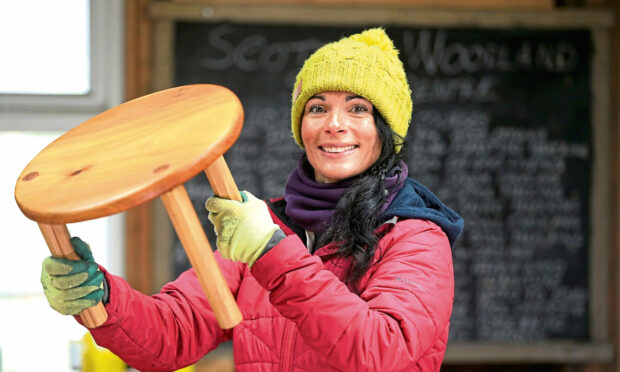

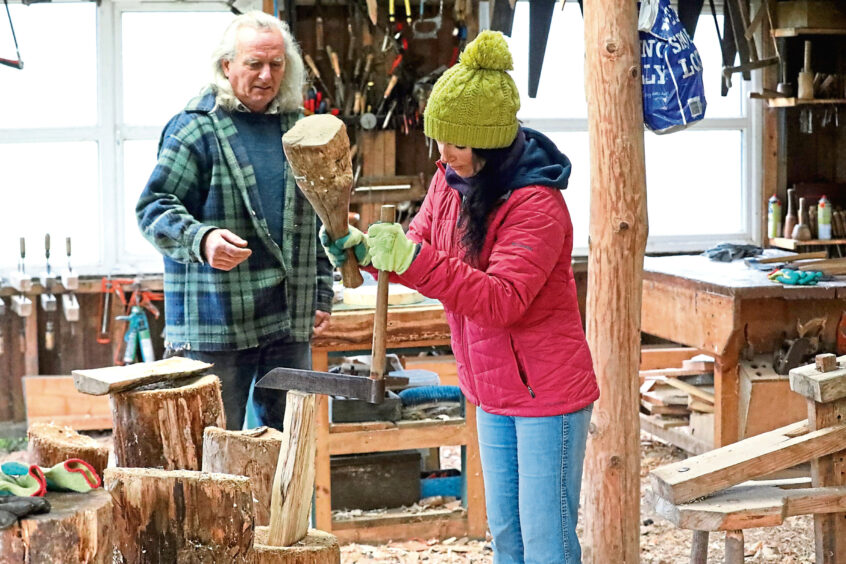
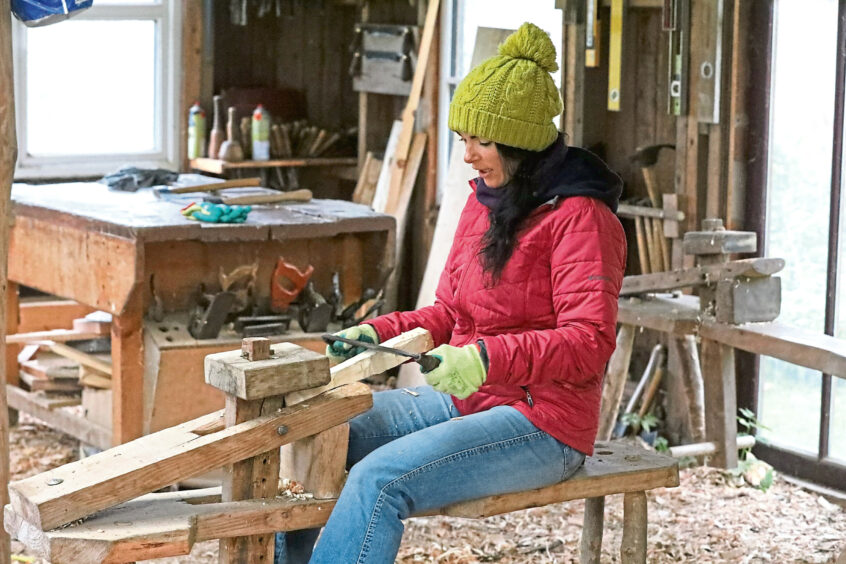
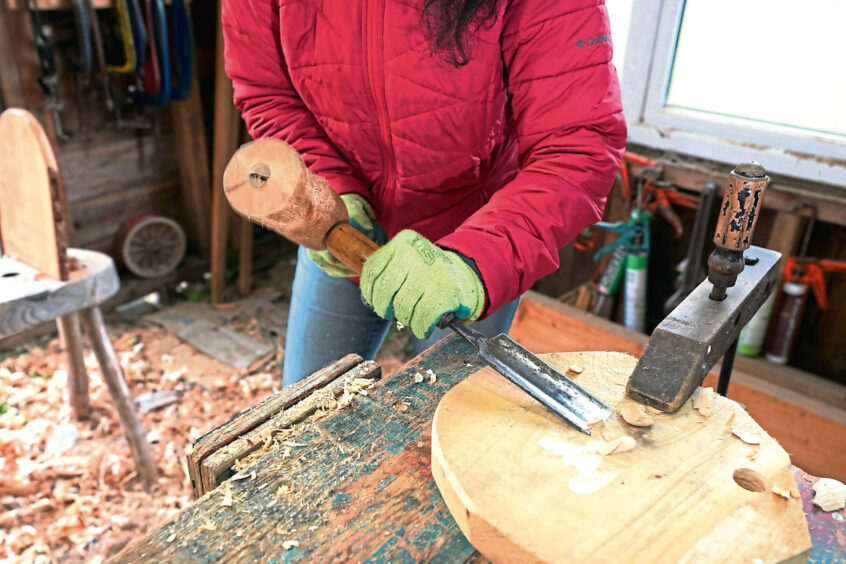
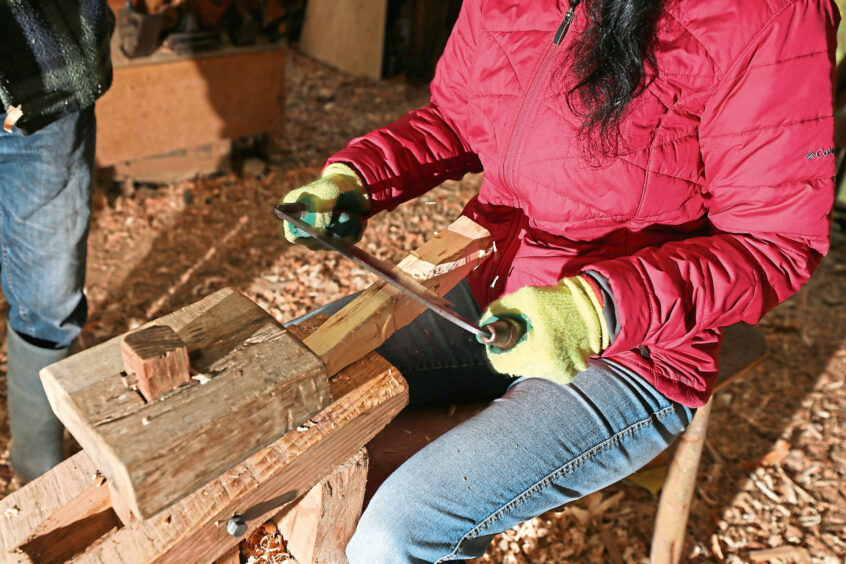
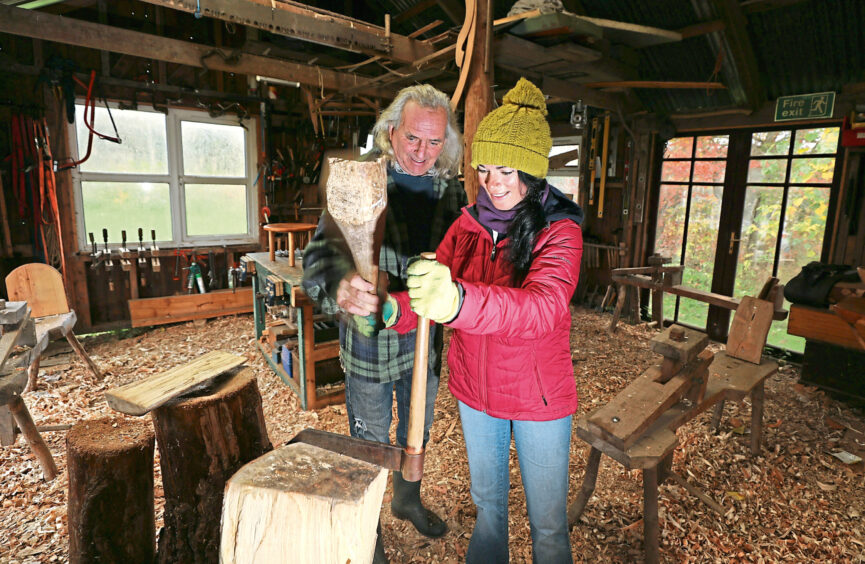
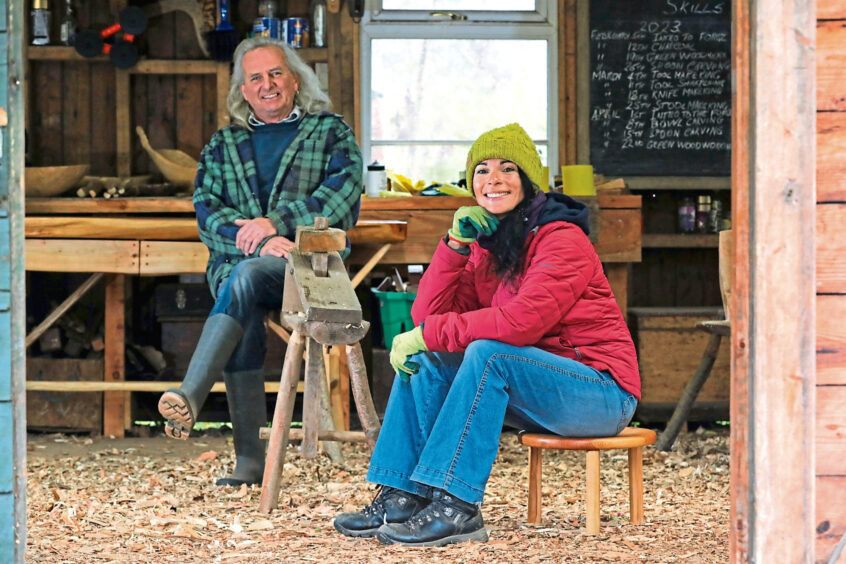
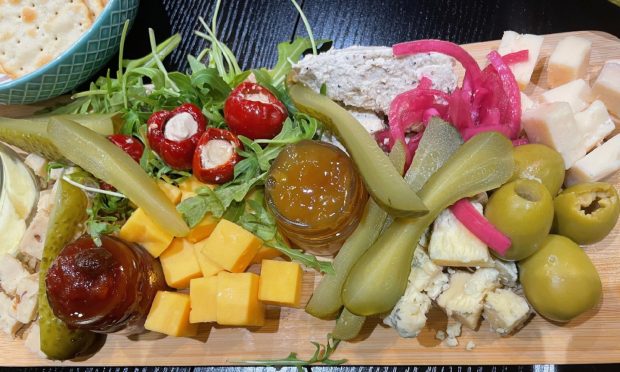
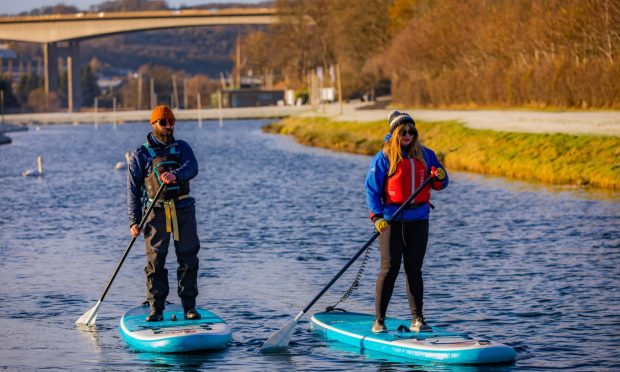





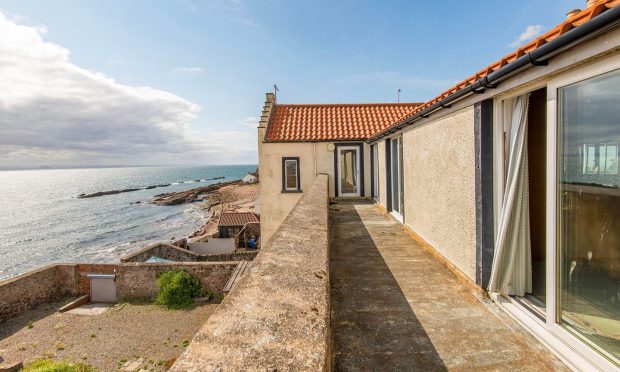
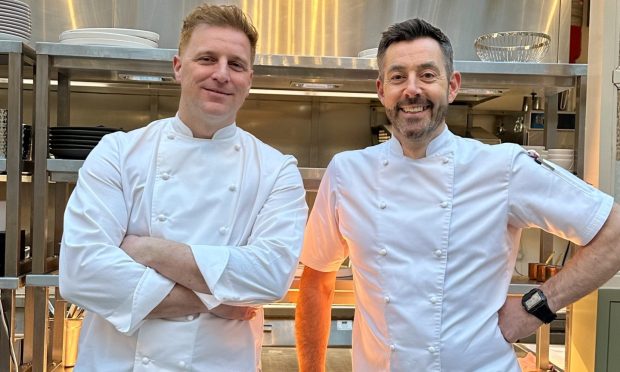

Conversation